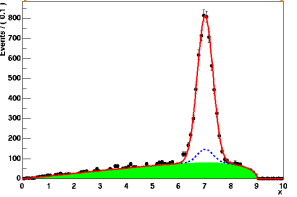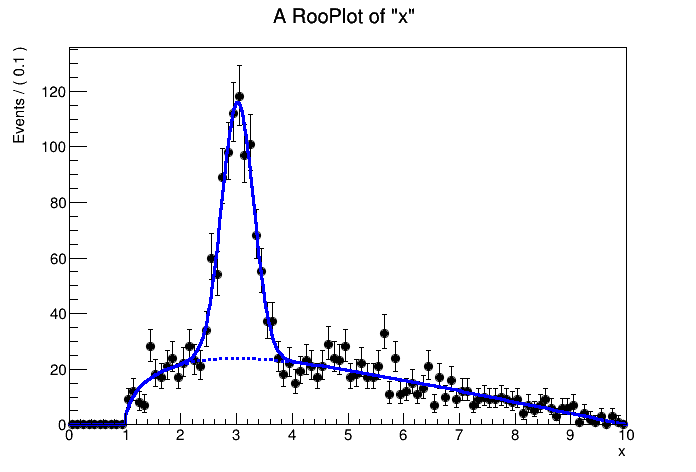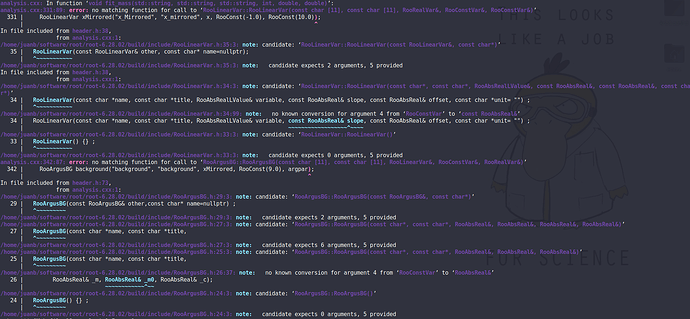Hi @jbarajas, welcome to the ROOT forum!
That’s a very good question, and there is a good solution. In general, in RooFit you can use the RooFormulaVar for variable transformations. Then, you define the pdf on the transformed variable. However, you’ll have to pay a hefty performance penalty in fitting, because RooFit does not know anymore how to do the pdf normalization without numeric integrals in this case.
That’s why I recommend you to use the RooLinearVar in this case. Here is an example:
// Observable:
RooRealVar x("x", "x", 0, 10);
// Using a variable transformation with the RooFormulaVar would do the trick.
// However, RooFit doesn't know how to analytically do the normalization over a
// variable that is transformed generally like this. It is commented out
// because there is a better solution. You can try it out, and you will see
// messages about numeric integration in the terminal output.
//
// RooFormulaVar xMirrored("x_mirrored", "10 - x", x);
// This is the key: define the pdfs on a linearly shifted version of the
// observable. Only in this case, RooFit still knows how to normalize the pdf
// without numeric integrals.
RooLinearVar xMirrored("x_mirrored", "x_mirrored", x, RooConst(-1.0), RooConst(10.0));
// Parameters:
RooRealVar sigmean("sigmean", "sigmean", 3.0, 0.0, 10.0);
RooRealVar sigwidth("sigwidth", "sigwidth", 0.3, 0.1, 10.0);
// Build a Gaussian PDF. Note that here we don't use the shifted variable:
RooGaussian signalModel("signal", "signal", x, sigmean, sigwidth);
// Build Argus background PDF:
RooRealVar argpar("argpar", "argpar", -0.5, -10., -0.01);
RooArgusBG background("background", "background", xMirrored, RooConst(9.0), argpar);
// Construct a signal and background PDF:
RooRealVar nsig("nsig", "nsig", 400, 0., 10000);
RooRealVar nbkg("nbkg", "nkbkg", 800, 0., 10000);
RooAddPdf model("model", "model", {signalModel, background}, {nsig, nbkg});
// Generate a toy MC sample from composite PDF:
std::unique_ptr<RooDataSet> data{model.generate(x, 2000)};
// Perform extended ML fit of composite PDF to toy data:
std::unique_ptr<RooFitResult> res{model.fitTo(*data, PrintLevel(-1), Minimizer("Minuit"), Save())};
res->Print();
// Create a RooPlot to draw on. We don't manage the memory of the returned
// pointer. Instead we let it leak such that the plot still exists at the end of
// the macro and we can take a look at it.
RooPlot * xframe = x.frame();
// Plot toy data and composite PDF overlaid:
data->plotOn(xframe);
model.plotOn(xframe);
model.plotOn(xframe, Components(background), LineStyle(ELineStyle::kDashed));
xframe->Draw();
The plot you will get with this example will look like this:
I hope that helps!
Cheers,
Jonas


